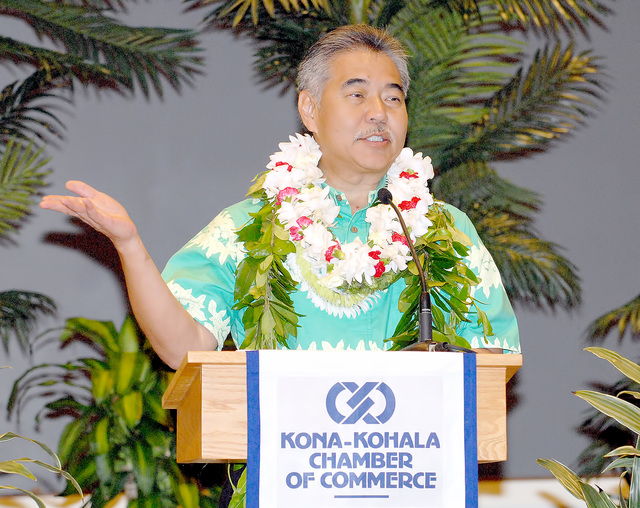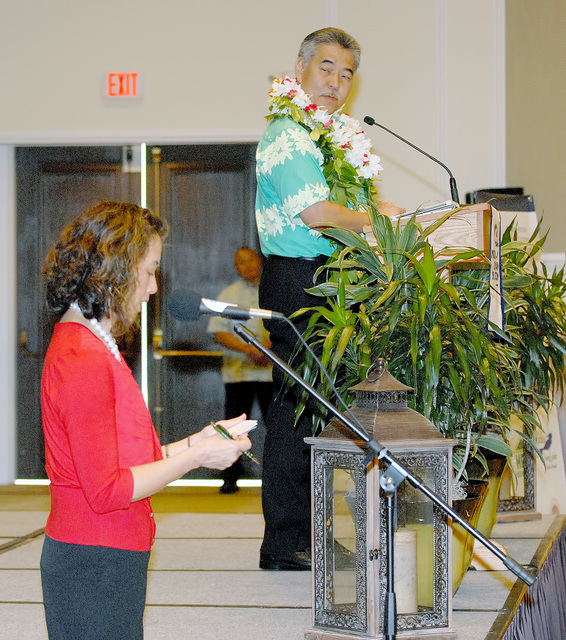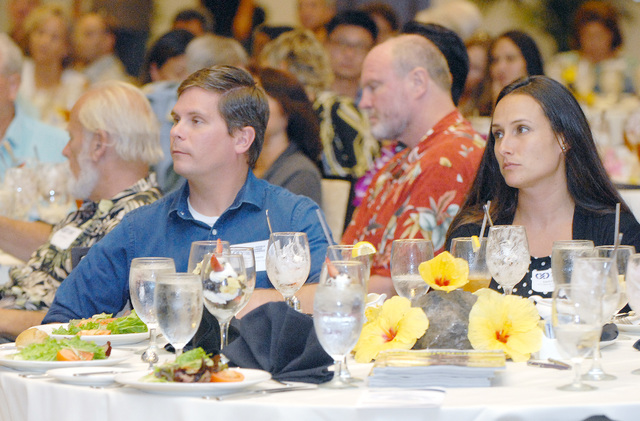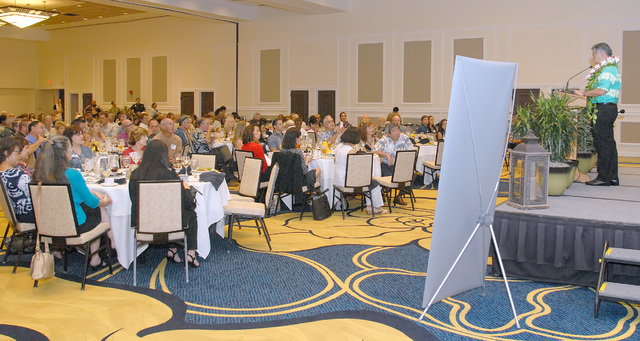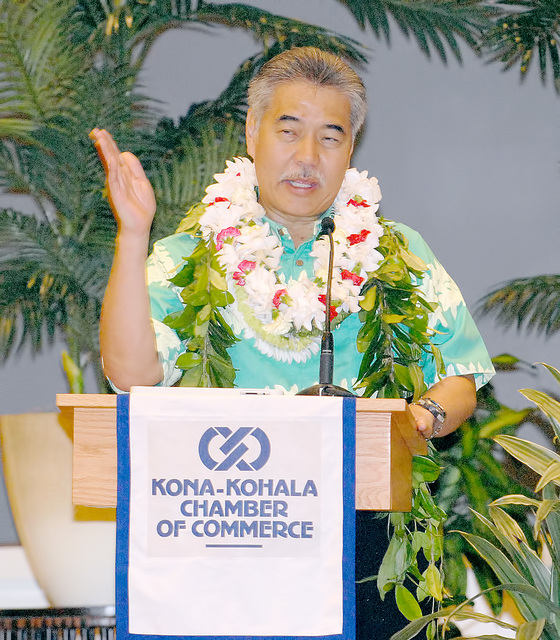Gov. David Ige panned state management of the Keauhou aquifer, called for quicker action on federally funded highway projects and praised his most recent pick to head the department that oversees state lands on Wednesday.
Speaking at a Kona-Kohala Chamber of Commerce luncheon, Ige also explained that he’ll use a weeklong “time-out” on the construction of the Thirty Meter Telescope to carefully listen to all sides.
“You can rest assured that all previous agreements and decisions will be honored,” he said in response to questions at the Sheraton Kona Resort & Spa at Keauhou Bay.
On the question of whether the state Commission on Water Resource Management should designate the Keauhou aquifer a state water management area, Ige said the state water code is clear.
“It is the county’s responsibility to manage the water resources until use approaches sustainable yield,” Ige said. “The water commission tells me we are not even halfway there.”
Current draw from the aquifer is 14 million gallons a day. Sustainable yield is pegged at 38 million gallons a day. Ige said he trusts the commission will look at the laws he helped draft as a state representative.
“The county has responsibility until uses reaches 80 percent of sustainable yield,” he said. “The state can only intercede if the county has failed to manage the resource.”
The National Park Service petitioned CWRM in the fall of 2013 to designate the aquifer, which would put in place a system of state oversight of permits. Last December, the commission ordered the National Park Service and the Hawaii County Department of Water Supply to explore alternatives for protecting the aquifer from future pumping. The commission won’t make a final decision until at least June.
Ige noted that he doesn’t control the decisions made by the body.
“I have confidence the commission will make the correct decision,” he said.
After a recent meeting with the federal Secretary of Transportation Anthony Foxx, it became clear once again the state needs to move faster on projects like the Queen Kaahumanu Highway widening project, Ige said. Foxx impressed upon him that states which accept federal highway money but don’t start spending it in six months get put on a “watch list.”
“When you go on a watch list after six months, and you have projects that have gone years without a notice to proceed, that’s absurd,” Ige said.
“I got home and I told (Interim Hawaii Department of Transportation Director) Ford Fuchigami, I don’t care what you have to do, we really got to get this project moving,” Ige said.
The $80 million project will get underway “certainly by the end of the year if not much sooner,” Ige said. A memorandum of agreement for the project between state, federal and local stakeholders was recently completed.
Ige said he met with federal officials in Washington, D.C., as part of an effort to be more aggressive about capturing and spending federal funds, and to press the case for preclearance of air passengers. Kona lacks customs agents and an international arrivals terminal, which prevents direct international flights from landing. However, Ige is trying to get U.S. customs agents to “preclear” passengers taking off from Narita and Kansai airports. Those passengers would then be able to land in Kona and other smaller airports around the state, Ige said. The governor has also pledged support for construction of a new international arrivals terminal for Kona.
“Japan delivers 1.5 million visitors to the state each year,” Ige said. “The Asian visitors spend significantly more than visitors from North America or Europe.”
To help move the Queen Kaahumanu project — which has been stalled since 2008 — Ige said the state has engaged the federal government in helping to prepare the environmental assessments for the project. The move ensures the feds won’t come along later and require more homework, Ige said.
Following roadblocks and arrests of protesters at the TMT construction site this month, Ige said he has “done a lot of listening to get a 360-degree view of the project,” and will continue to listen over the next few days.
“It’s really about listening and finding a way for discovery and sacred sites to coexist on a very important asset,” Ige said.
Ige said that no one person has the knowledge and expertise for the full spectrum of responsibility of the 10 divisions overseen by the state Department of Land and Natural Resources. But Suzanne Case, his new pick to be chairperson of that department, has the qualities of leadership that will serve her well in her role, should she be confirmed by the Senate, he said.
Ige nominated the executive director of the Nature Conservancy of Hawaii after public outcry against his first pick, Carleton Ching, who is vice president of community relations for the development company Castle & Cooke Hawaii.
“She’s smart, she’s collaborative, she’s a great listener,” Ige said of Case.
Ige said his pick is part of an effort to change the culture of state government by bringing in department heads who are “great leaders” and responsive to the public.
“She believes the community is part of the solution,” Ige said.
Ige said he is working on a plan to double local food production, which would in turn create a local economy of associated services and investments — rather than Hawaii sending $9 billion away from its shores each year on goods that are made elsewhere.
Ige also pledged to work more closely with county officials, both in identifying needed infrastructure projects and in collaborating with local police and ocean safety officers to help keep the peace on state lands.
“DLNR doesn’t have the enforcement officers it needs,” he said. “I don’t want it to be a situation where you have rules you don’t enforce … I am working with the mayors and counties on ways to share resources and responsibilities.”






